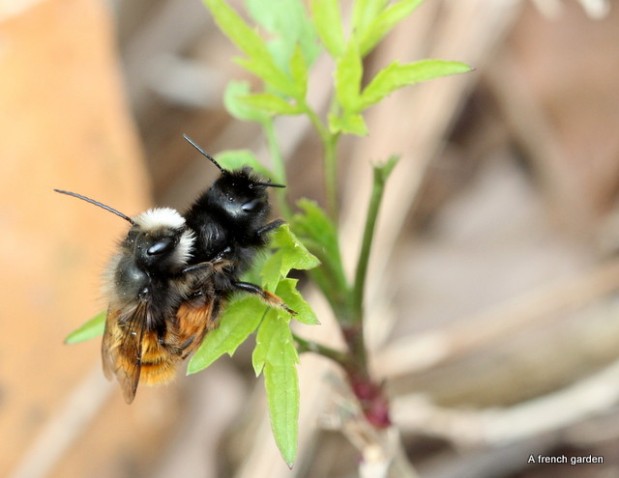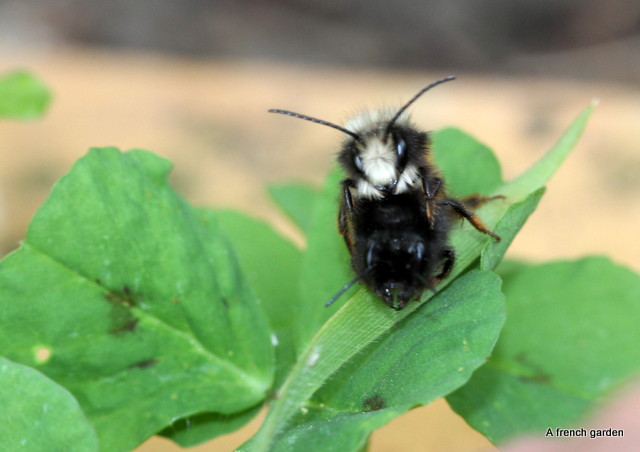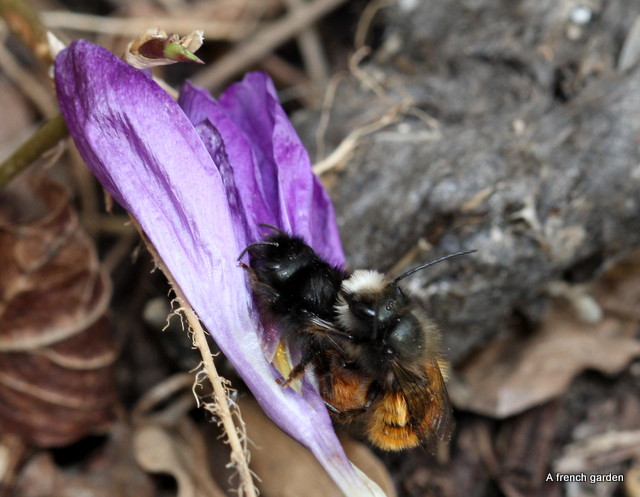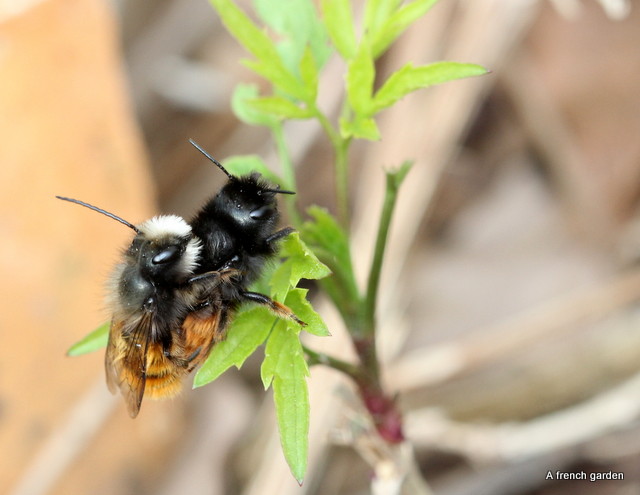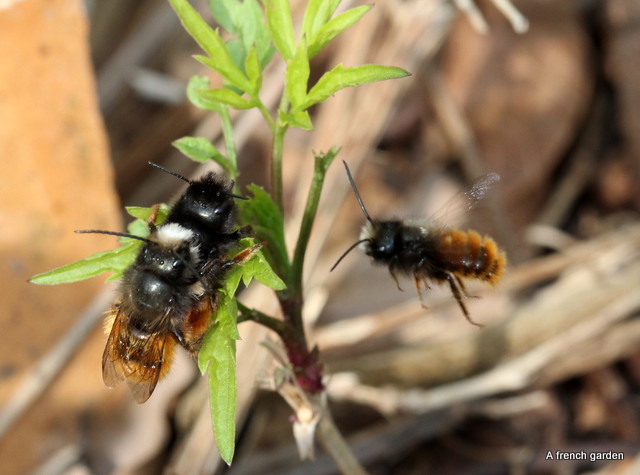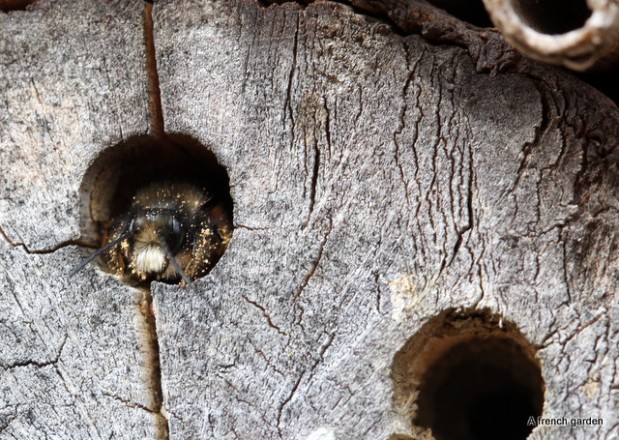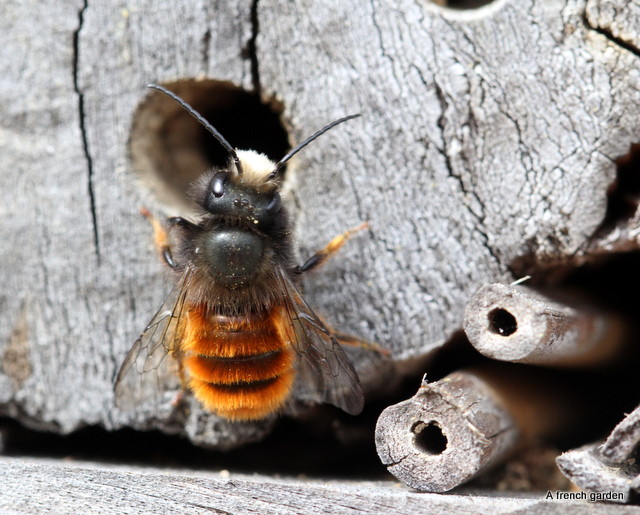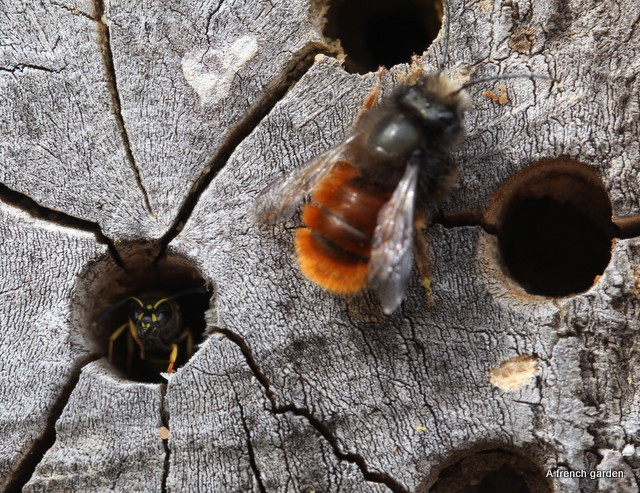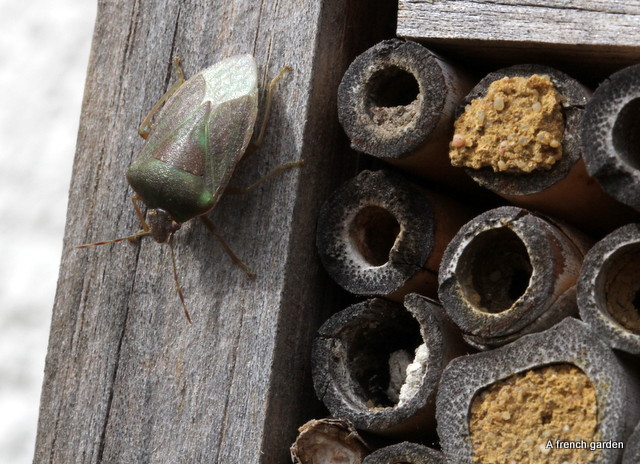Last year I protected some Ivy bee nests in the garden. So, at the end of August I removed the cardboard that had been covering the patch to stop the weeds overrunning it.

I did not see a bee until the first of September but I noticed the holes and I was thrilled that the eggs had hatched.

By the fifth of October is was getting difficult to count the number of holes but I think there must have been ten to twelve which is a doubling of last years numbers but it is not a large congregation for Ivy bees. I did see more holes near the carport which won’t get disturbed either this year.

On the 28 September I saw a possible Epeolus cruciger flying around the nests but unfortunately the photograph is not good enough for a positive identification. I did not attempt to capture it but I never saw it again. These Epeolus are cuckoo bees and like the bird cuckoo will lay their eggs in the nest of others. In this case it will be the nest of the Ivy bee and its young will profit from the stores of pollen that the Ivy bee has laid up for her young.
The Ivy bees are so called as they can be found gathering pollen on the Ivy at this time of year and many studies believe that if Ivy (Hedera helix) is available then the Ivy bees will keep to this single pollen when available. Other studies feel that the Ivy bees are more flexible toward which pollen they gather.

My Saffron patch is just beside my Ivy bees holes and they are a favourite pollen resource for the Ivy bees that strip the yellow anthers of the pollen. There is plenty of Hedera helix growing wild in the woods near here and I am the first person to grow Saffron in this area.
I cannot be sure that they are my Ivy bees but it seems a fair supposition that the bees could miss such a convenient source of nectar and pollen.

There is no problem with sharing such bounty between bees. These two just budge to make room for each other.

The acrobatics makes interesting watching too.

There is plenty to share.

No species is excluded.
The bounty will be shared until the bulbs stop flowering.




























